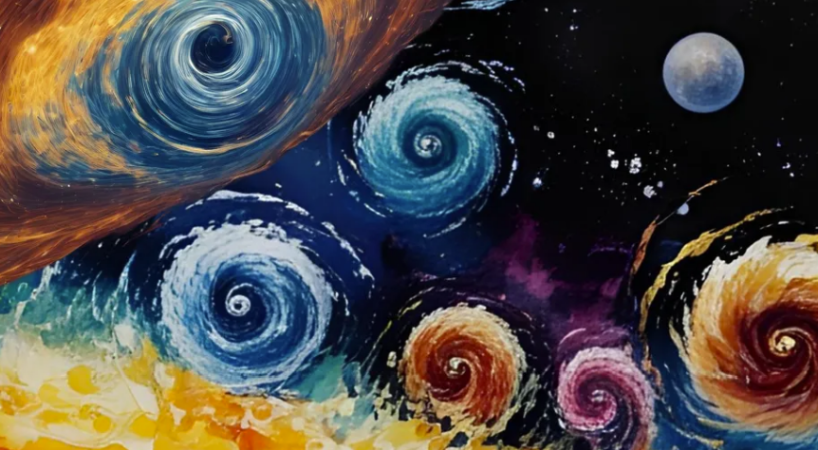A newly proposed cosmic model eliminates the universe’s two most puzzling components—dark energy and dark matter—collectively called the dark universe. This model replaces them with numerous sudden, step-like bursts termed “transient temporal singularities” occurring throughout the cosmos.
Scientists suggest these transient temporal singularities could briefly open to flood the universe with matter and energy, driving the expansion of space. These rifts close so rapidly that they remain undetectable, causing us to perceive the cosmic expansion and gravitational effects typically attributed to dark energy and dark matter.
Richard Lieu, a physics professor at The University of Alabama in Huntsville and the study’s lead author, states that the model explains both cosmic structure formation and stability, as well as the main observational features of universal expansion. It does so by invoking density singularities in time that uniformly impact all space, thus replacing traditional dark matter and dark energy.
The dark universe represents a major scientific dilemma because only about 5% of the cosmos’ matter and energy consists of the familiar stars, planets, and visible stuff we interact with daily. The remaining 95% is unknown. Of this unknown portion, dark energy accounts for roughly 70%, causing accelerated expansion, while dark matter, which does not emit or absorb light, comprises about 25% and aids galaxy formation through gravity.
This massive unknown makes the dark universe a double mystery scientists aim to resolve. Building on prior work where Lieu suggested gravity could exist without mass, this new model removes the need for both dark matter and dark energy altogether.
Unlike other theories that require exotic concepts like negative mass or negative density, Lieu’s approach does not violate conservation laws. Instead, it posits that matter and energy arise and vanish suddenly in brief bursts via transient temporal singularities. These singularities happen too infrequently and too swiftly to be detected, possibly explaining why dark matter and energy remain elusive.
The origins of these singularities remain unknown, just as the origin of the Big Bang itself is still a mystery. Lieu describes the model’s effect as generating a “negative pressure” with an anti-gravity-like force that pushes the universe apart, akin to dark energy’s role.
For example, the negative pressure exerted by magnetic fields along field lines resembles this effect. Einstein also theorized negative pressure in his 1917 cosmological constant paper. When combined with positive mass-energy density, these pressures keep the overall energy positive for any uniformly moving observer, thus avoiding negative density assumptions.
Lieu concludes that the dark universe and its constituents appear only briefly, uniformly filling the universe except for random density variations that grow into structures like galaxies. Between these bursts, dark matter and dark energy do not exist anywhere.
The main difference from the standard cosmological model is that the standard assumes one singularity—the Big Bang—while Lieu’s model proposes multiple transient temporal singularities.
To validate the theory, Lieu plans to analyze data from large ground-based telescopes like the Keck Observatory in Hawaii and the Isaac Newton Group of Telescopes in Spain. By slicing deep-field observations according to redshift—a measure of how much light stretches as objects recede—he hopes to detect “jumps” in the redshift-distance relation. These jumps would provide evidence of the transient singularities influencing cosmic expansion.
Lieu’s research was published on March 21 in the journal Classical and Quantum Gravity.

